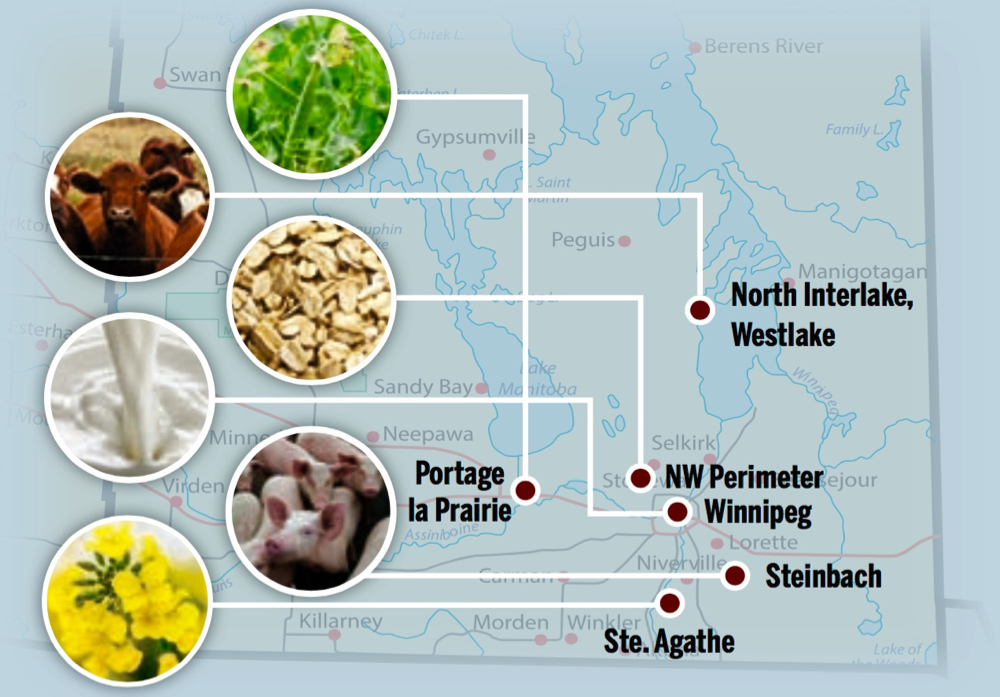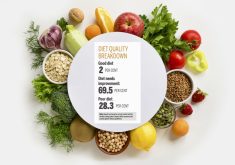If Manitoba wants to succeed in becoming a world-class protein producer, it needs to put aside partisan bickering.
Forget about getting drawn into fighting over whether plant or animal protein is better, and in getting a larger slice of the same old pie. Instead the province should be pulling together and creating a larger pie.
That was an overarching theme that various speakers and presenters brought to the recent Manitoba Protein Summit in late September.
Typical of speakers was Sylvain Charlebois, the “food professor” from Dalhousie University who regularly contributes to the Manitoba Co-operator.

“You can use proteins as a unifying force to get people together and work together… there’s more money to be made for cattle producers if they play it right,” Charlebois said.
It’s a balance that James Battershill hopes to cash in on.
He’s best known as the former general manager of Keystone Agricultural Producers. Battershill left KAP last year to start his own food-processing company, Juno Food Labs.
Why it matters: Growing the province’s protein sector isn’t a zero sum game where one sector’s success takes away from another. Both plant and animal protein can thrive in the province.
Battershill is among those courting the “flexitarian” market. His first product, a ground beef substitute which blends 70 per cent meat with 30 per cent plant protein, is still in the last stages of development. It is set for a soft launch at a handful of local grocery stores by the end of the year.

“In our market analysis, what we see is that the flexitarian consumer really exists along a spectrum,” he said.
Some are stricter than others, he noted. Some eat meat while home with their parents, or with friends or family gatherings. Some have a largely conventional diet, but have embraced “Meatless Mondays.” Some have cut out red meat for health reasons.
“I think that in Manitoba we have competitive advantages both with plant protein production and conventional livestock production and especially with respect to being able to produce both of those things sustainably,” he said. “I think that it would be a mistake to worry too much about those two industries butting heads in Manitoba when, really, what we’re competing with is industries in conventional livestock production and in plant-based protein production internationally.”
Read Also

What I learned about Manitoba eggs
Manitoba-laid eggs provide good, locally produced nutrition while supporting local farmers and the Canadian agriculture industry.
Access to capital and venture capital will be key in bringing the province’s vision to life, he added. There is currently little opportunity for entrepreneurs to access that needed capital, he said.
“How do you take a really cool idea and build a really great business plan to go along with it? Because innovation without that opportunity for commercialization doesn’t go anywhere, and that is a challenge for us,” he said.
It takes months and upwards of $10,000 to take a food product from concept to grocery shelf, Manitoba’s Food Development Centre estimates.
Meat sector woes
Manitoba’s protein strategy might be all about growth, but Manitoba’s feed shortage, trade issues and now an outcry over Crown land regulations may have livestock producers on a different wavelength.
Manitoba Agriculture Minister Ralph Eichler singled out Crown lands in his comments to the 2019 Manitoba Protein Summit in September, arguing that the grazing and haying capability from Crown lands makes Manitoba ripe for cattle industry growth. At the same time, the province’s recently announced Crown lands regulations sparked outrage in the province’s major cattle-producing regions, with producers arguing that shorter lease lengths and no first of refusal translates to lack of security, business planning ability and little opportunity for investment.
The same farmers are also facing yet another year of poor feed supplies, something that Eichler acknowledged in his comments to the summit. The province has since pointed to MASC lending and loan deferral programs, as well as hay listings and newly open Crown lands to help farmers deal with the strain.
The province has been careful to include animal protein in the strategy. Eichler has repeatedly said that he is “bullish” when it comes to expanding Manitoba’s livestock industry, although he admits that plant-based protein will need more initial development to catch up to the established meat sector. The province’s protein strategy would see 35 per cent more meat production and processing capacity between 2017 and 2025.
Trade issues have also loomed large in the livestock industry. Earlier this year, China suspended Canadian beef and pork imports due to a fraudulent export certificate on a shipment of pork. The move promised to hit hard at Manitoba’s pork companies, with their healthy Chinese customer base.
Keystone Agricultural Producers president Bill Campbell has said he is pessimistic about those trade challenges, given the geopolitical landscape.
“I’m not sure there’s the same will to resolve some of these on the political landscape and also, being a primary producer, I’m used to dealing and getting results relatively quickly,” he said, noting that the timeline on these issues has been notably slow.
Campbell was more positive towards the protein strategy and possibility of collaboration between the two protein sectors.
“I think there’s so many benefits that can be utilized that we haven’t explored yet,” he said. “I think the other part is we need to ultimately make sure that the consumer’s needs are met and we can fulfil them. We just need to identify them and understand the true metrics of all of the different plant-based and animal-based products that we deliver. We need truth in what the product is and how it’s processed.”
Strategy a good start
Charlebois praised Manitoba’s direction, assuming that the province follows through.
“I was trying to think about things that were left out and I couldn’t think of anything, to be honest,” he said. “I’m a researcher. I saw that. I’m big on innovation. I saw that. Value chains, I saw that.”
Other parts of Canada have focused on private production and farmer needs when it comes to protein industry development, he said, but argued that will be of limited value without a comprehensive effort to grow a value chain right to the end-user.
The province is well placed for such development given its diverse mix of livestock and grain sectors and readily available natural resources, he added. The province has also argued that Manitoba’s wealth of land and easily accessible hydroelectricity make it attractive to companies looking to move in.
If the strategy has a weak point, Charlebois said, it’s communication. There was little public outreach outlined for the strategy, he argued following the September summit.
“I think that stakeholders in the room will have to think about that. How do you go out and position Manitoba as a super-powerhouse, a super-powerhouse when it comes to protein and let people know about it?” he said.
Laying the foundation
The province announced its protein strategy at the start of 2019, but industry got its first look at what government’s direct involvement in that strategy will look like at the Manitoba Protein Summit.
Four key initiatives will underpin the first stage of the protein drive:
- The Manitoba Food Development Centre will receive $362,000 to develop and improve protein extraction techniques.
- A Manitoba Protein Development Consortium will be formed out of local industry, government and post-secondary institutions.
- An entrepreneurial protein competition will be held next March, to accelerate commercialization of new protein products.
- Manitoba has signed a memorandum of understanding with stakeholders across the Prairies and U.S. Great Plains to create a “protein highway.”





















